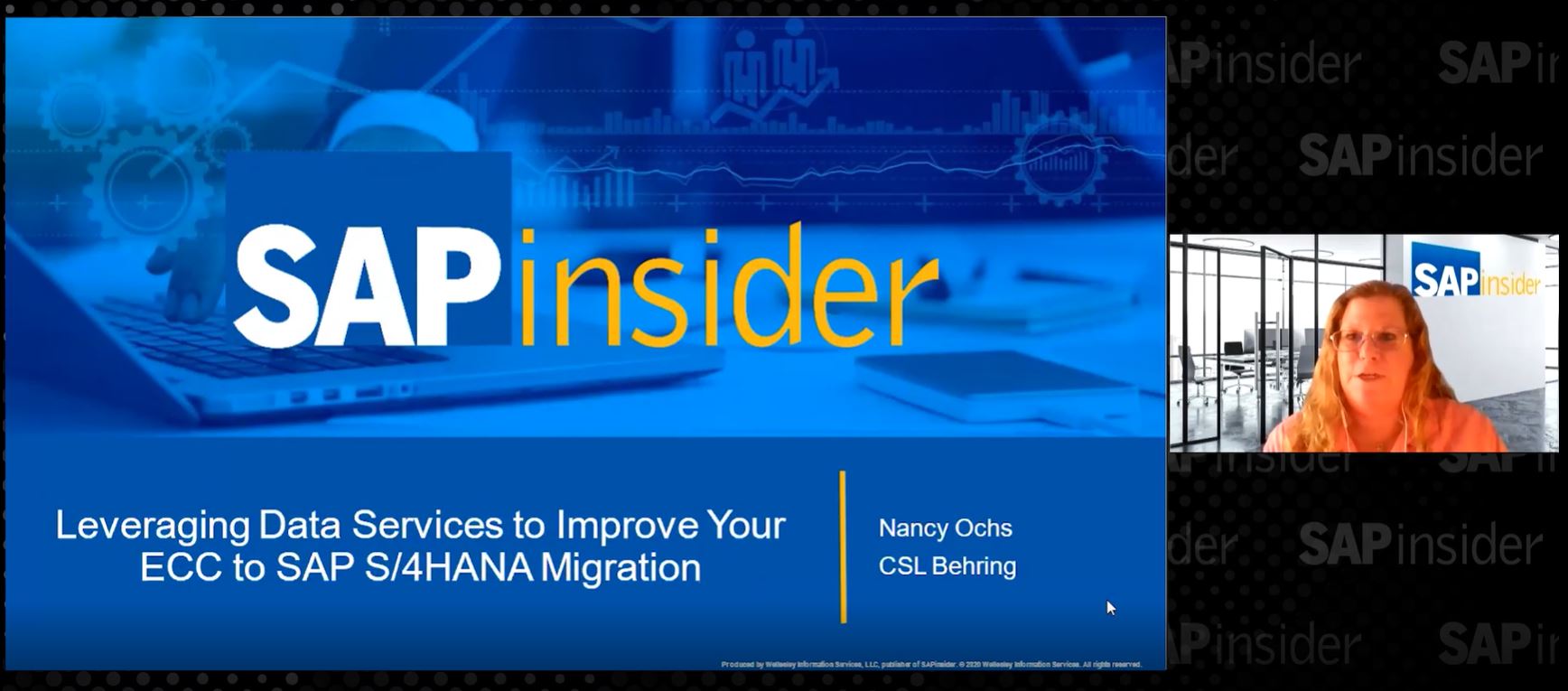Live from SAPinsider Studio: Philip On of SAP on Enterprise Information Management
Philip On, Vice President, Marketing, Enterprise Information Management, SAP, joins SAPinsider Studio during the 2016 BI-HANA-IoT event in Las Vegas to discuss how organizations moving to a digital framework should think about their Enterprise Information Management (EIM) environment. Topics of this discussion include the definition of a digital enterprise from an EIM standpoint, managing information as an enterprise asset, trusted data discovery and information excellence, and the role of causal users and agile data preparation in a digital enterprise.
Ken Murphy, SAPinsider: Hi, this is Ken Murphy with SAPinsider and I’m at the SAPinsider BI-HANA-IoT event in Las Vegas. This afternoon I am pleased to be joined by Philip On, who is the Vice President, Enterprise Information Management, SAP. He is here today to talk to us about enterprise information management in the digital age. Philip, thanks for being with us.
Philip On, SAP: Thank you for having me.
Ken: I was hoping to start with a definition of what makes a digital enterprise. Is it the organization that adapts to an influx of complexity and data, is it moving to real-time? What is your definition?
Philip: You touched on some great examples. A digital enterprise is one that can harness information as an enterprise asset. And be able to share this information and use it in real-time to help capture new business opportunities, to differentiate themselves, to innovate faster. A digital enterprise is a company that runs their business processes, their analytics, all in a digital way. So companies that are establishing digital enterprises really need to look at information as an enterprise asset.
Ken: So with an influx of data presenting a bigger challenge of managing the quality and consistency of that data, is there a reason why the previous methods for doing this aren’t sufficient anymore?
Philip: There are a couple of reasons. The previous method of managing and improving data quality put the burden on IT to figure out what’s wrong with the data quality. But the truth is, only the business really owns their data, they know exactly what good data looks like to the business user, either in finance or marketing or sales, you know who your customers are, and therefore you are in a better position to improve its quality. So the new way vs. the old way is to empower more business people with the ability through a business user interface to actually have impact in cleaning the data and preparing the data. The second big change is that with the digital enterprise the pace and speed at which improving data quality has accelerated, so you need to be able to provide the capabilities that offer real-time cleansing of data using technology like HANA with in-memory performance. So that at the point of time when you’re looking at that report or doing a business process transaction you’re going to get trusted data, the data that is complete, reliable, relevant, and usable.
Ken: What are some other ways that a digital enterprise should begin to think about their enterprise information management?
Philip: Really to think about a digital enterprise and information management, it can’t be an afterthought but a priority. It is truly the cornerstone of a digital enterprise; the ability to manage information as an enterprise asset and to deliver on the promise of information excellence. What do I mean by information excellence? It’s really helping the business manage data and extract the best value from it so you have completeness of the information you need to give you a single view of the business so that you have trust, so that there’s high quality information that your users can trust. And that it’s relevant for the business process or the transaction or the decision at that point in time.
Ken: How does an increase in self-service reporting change the dynamic and the methods for data preparation?
Philip: In fact, this is a very relevant trend and self-service data visualization is exposing data to a broader range of people not just the technical BI analyst anymore. Casual users now can see their data and when they can see their data they can start to realize if there’s problems with the information. So this has really triggered the need for empowering those same users to take action, to prepare their data, combine tables from multiple sources, and clean that information.
Ken: We hear a lot about agile data preparation. It seems a little counter-intuitive to that concept of master data management to have agile data preparation. How are those two reconciled?
Philip: I always think of it as a journey. When you are managing information as an enterprise asset you really need to understand from your business users what’s wrong with the data. How should it be governed? And agile data preparation is that first step to empower the business people to give you that input and feedback. And at the same time they’re using that data and finding out what’s useful for them. As a result they’re passing on that knowledge of what is good data – how should you clean it, how should you govern it – to the master data management program so that you can standardize on an enterprise way to clean data consistently across the company. So it’s a journey of data preparation provides you with input and MDM is a longer term strategy that can ensure that what you learn from the business users could be standardized across the whole company. And you can scale, and you can execute so much faster when you do have standards.
Ken: And is there an SAP information management solution on SAP HANA?
Philip: Absolutely. HANA EIM is the name of it; it is natively within HANA the ability to integrate data using any style of data integration from real-time to bulk batch, virtualization, even streaming of events and processes all natively available in HANA. In addition you have the ability to clean the data, so all the data quality capabilities are also natively available on HANA. And by the way you can build applications on top of the services now that are in HANA for integrating and cleaning. In fact, agile data preparation is an application built onto HANA EIM capabilities that I just described.
Ken: Philip, thanks for joining us today.
Philip: Thank you for having me.




